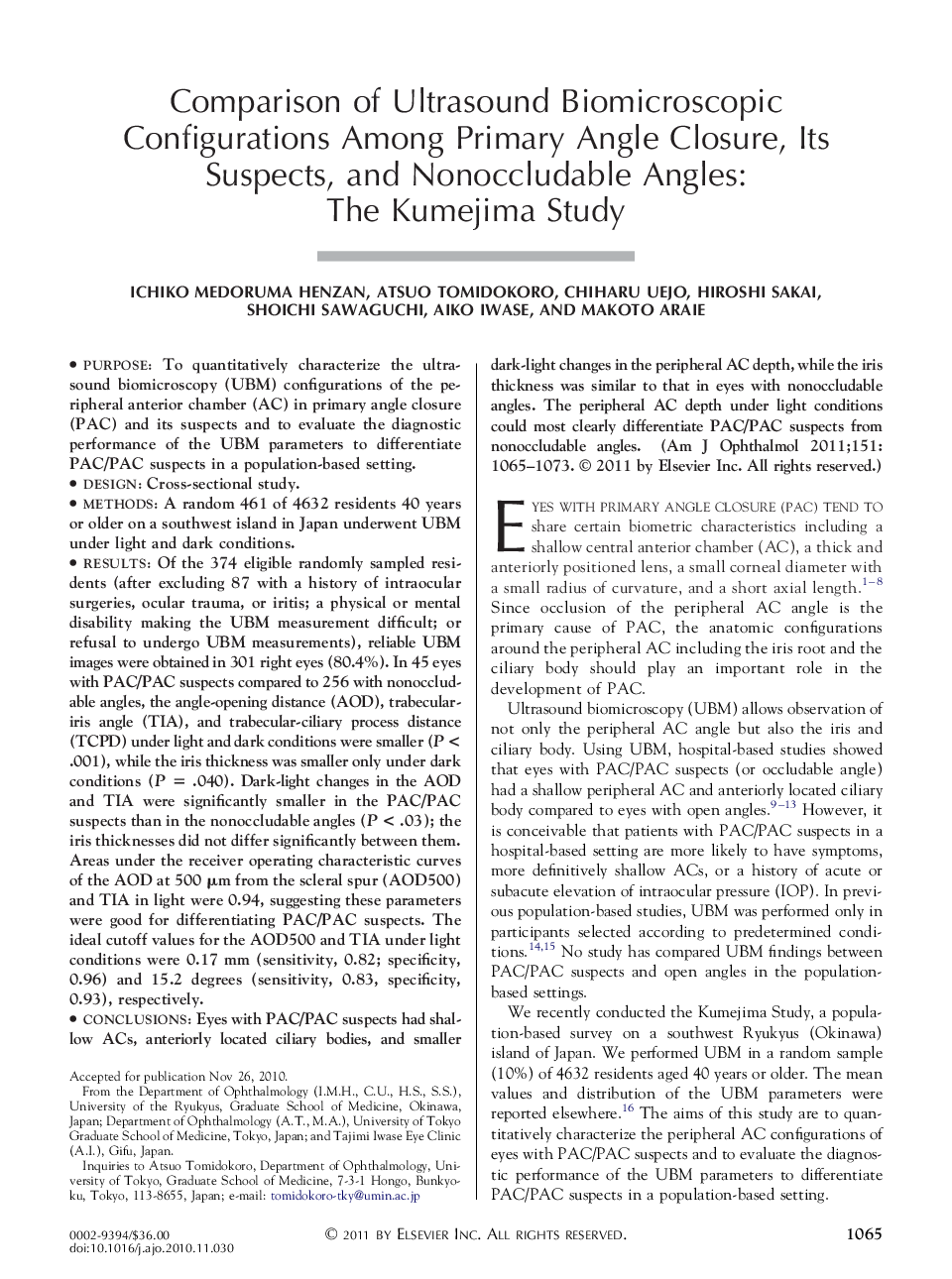| کد مقاله | کد نشریه | سال انتشار | مقاله انگلیسی | نسخه تمام متن |
|---|---|---|---|---|
| 6196137 | 1602172 | 2011 | 10 صفحه PDF | دانلود رایگان |

PurposeTo quantitatively characterize the ultrasound biomicroscopy (UBM) configurations of the peripheral anterior chamber (AC) in primary angle closure (PAC) and its suspects and to evaluate the diagnostic performance of the UBM parameters to differentiate PAC/PAC suspects in a population-based setting.DesignCross-sectional study.MethodsA random 461 of 4632 residents 40 years or older on a southwest island in Japan underwent UBM under light and dark conditions.ResultsOf the 374 eligible randomly sampled residents (after excluding 87 with a history of intraocular surgeries, ocular trauma, or iritis; a physical or mental disability making the UBM measurement difficult; or refusal to undergo UBM measurements), reliable UBM images were obtained in 301 right eyes (80.4%). In 45 eyes with PAC/PAC suspects compared to 256 with nonoccludable angles, the angle-opening distance (AOD), trabecular-iris angle (TIA), and trabecular-ciliary process distance (TCPD) under light and dark conditions were smaller (P < .001), while the iris thickness was smaller only under dark conditions (P = .040). Dark-light changes in the AOD and TIA were significantly smaller in the PAC/PAC suspects than in the nonoccludable angles (P < .03); the iris thicknesses did not differ significantly between them. Areas under the receiver operating characteristic curves of the AOD at 500 μm from the scleral spur (AOD500) and TIA in light were 0.94, suggesting these parameters were good for differentiating PAC/PAC suspects. The ideal cutoff values for the AOD500 and TIA under light conditions were 0.17 mm (sensitivity, 0.82; specificity, 0.96) and 15.2 degrees (sensitivity, 0.83, specificity, 0.93), respectively.ConclusionsEyes with PAC/PAC suspects had shallow ACs, anteriorly located ciliary bodies, and smaller dark-light changes in the peripheral AC depth, while the iris thickness was similar to that in eyes with nonoccludable angles. The peripheral AC depth under light conditions could most clearly differentiate PAC/PAC suspects from nonoccludable angles.
Journal: American Journal of Ophthalmology - Volume 151, Issue 6, June 2011, Pages 1065-1073.e1